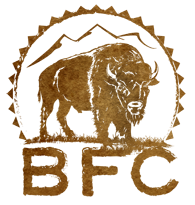From Zero-Sum Game to Sustainable Game Stewardship
The “tragedy of the commons” refers to the situation where several private parties are given equal access to a limited resource, the classic example being a public pasture surrounded by private ranches. Left to their own devices, each rancher will tend to maximize their share of forage, resulting in a competition that quickly desiccates the pasture to the detriment of all. This idea gave rise to environmental regulation at a time when industries were freely discharging toxic waste into rivers and lakes.

The State of Montana understands this concept very well. Under the auspices of the Interagency Bison Management Plan, they have created a severely limited “commons” (a.k.a. “tolerance zones”) for wild bison just outside the boundaries of Yellowstone National Park. On these cramped buffalo commons, the state then ‘allows’ access to a very limited “resource” - the American Buffalo - for treaty Tribes that had been forcibly separated from their aboriginal food source and cherished cultural resource for over a century.
Montana’s Department of Livestock, keen to limit wild bison’s access to forage on public lands, understands that if Tribes have to compete with one another for unpredictable access to buffalo under these extremely prejudicial conditions, which perpetuate the traumas of genocide, then each Tribe will attempt to harvest as many buffalo as they feel are needed to address the grinding poverty, malnutrition, and cultural revival on their respective reservations.
This colonialist regime keeps the Yellowstone Bison population artificially low, insuring there will never be enough buffalo to satisfy the (growing) cultural and economic needs of all the individual Tribes. Though the Park Service’s own science tells us that there is room for at least 11,000 bison in the Park itself, and though the U.S. Fish & Wildlife says the historic range of bison within the entire Yellowstone Ecosystem could support closer to 70,000 American Buffalo, Montana’s “zero sum game” assures that the bison population will rarely get above 5,000.
Imagine what might happen if this last remnant of America’s wild bison, already stressed by a changing climate, were suddenly struck by something like the mass wasting disease that is killing elk in Wyoming.
So Montana’s livestock industry indirectly profits by perpetuating a system that exploits and reinforces the poverty-mentality of the Tribes. For example, Tribes which want to maximize harvest advocate against trapping bison for conservation transfers to distant Tribes, since trapping bison at the Park’s boundary deprives them of harvesting opportunities. Another Tribe exercises their treaty right to harvest bison, while at the same time regularly seeking shipments of bison from the trap to their reservation for slaughter and distribution to their elderly and infirm. Under this system, satisfying any Tribe must come at the cost of another.

The final indignity imposed by Montana is to force the harvest to take place in full public view - unlike all other hunting - so that the Tribes now take the brunt of public criticism for unsustainable harvest, while the state is rewarded with maximum “culling” of bison during harsh winters like this year’s, when thousands of bison attempt to migrate out of the Park to access lowland grasses. The situation is so dangerous that a Tribe member caught a stray bullet this year while dressing his kill in the field.
When acting as a rational actor, at the Winter Operations meeting of the various stakeholders, the Nez Perce Tribe advocated for a cap on total removal of 740 bison. Montana alone prevented the consensus required under the plan, ensuring that each Tribe would be left to their own devices. Subsequently, it was the Nez Perce themselves who harvested the most bison, and were still looking to increase harvest opportunities after the total removal approached 1500. Of course, when you look into the moist eyes of a Tribal grandfather who has come to harvest the first buffalo for his family in his lifetime, never having imagined that this day would come, it is easy to understand that he is not the problem here.
This is the tragedy of the buffalo commons, as controlled by the Sate of Montana. Blaming Tribes for this colonialist regime is superficial, ignorant, and has the practical effect of absolving the state itself.
The solution to this ongoing tragedy is quite obvious. In order to encourage the Tribes to cooperate with one another, rather than competing in the state’s cynical game, the Tribes must exert their Tribal sovereignty over wild bison by negotiating a historic co-stewardship agreement with the Park Service and the Forest Service. The state of Montana would be precluded from participating by their refusal to legally recognize Yellowstone Bison as wildlife, and they will be legally precluded from interfering with the exercise of Tribal sovereignty under Article 6 of the U.S. Constitution, as recently interpreted by the Supreme Court.
Simply stated, in relation to our federal land stewards and Tribal treaty rights over wild bison on National Forest lands, Montana has no ‘sovereignty’ to exercise in protecting private economic interests. They are, however, entitled to consultation as the Tribes expand and restore wild bison habitat. Eventually, there can be enough wild bison to satisfy the interests of the Tribes in harvesting them — out of public view and danger — as well as seeding conservation herds around the country. Shipping to slaughter will be unnecessary and prohibited, in accord with the Park Service’s wishes.
The Secretaries of both the Departments of Interior (Park Service) and Agriculture (Forest Service) have made it clear that Tribes are welcome to lead the restoration of bison and ecosystems. It is now up to the Tribes to reciprocate, by putting aside their differences and joining forces to restore the American Buffalo to its proper place on the land.







